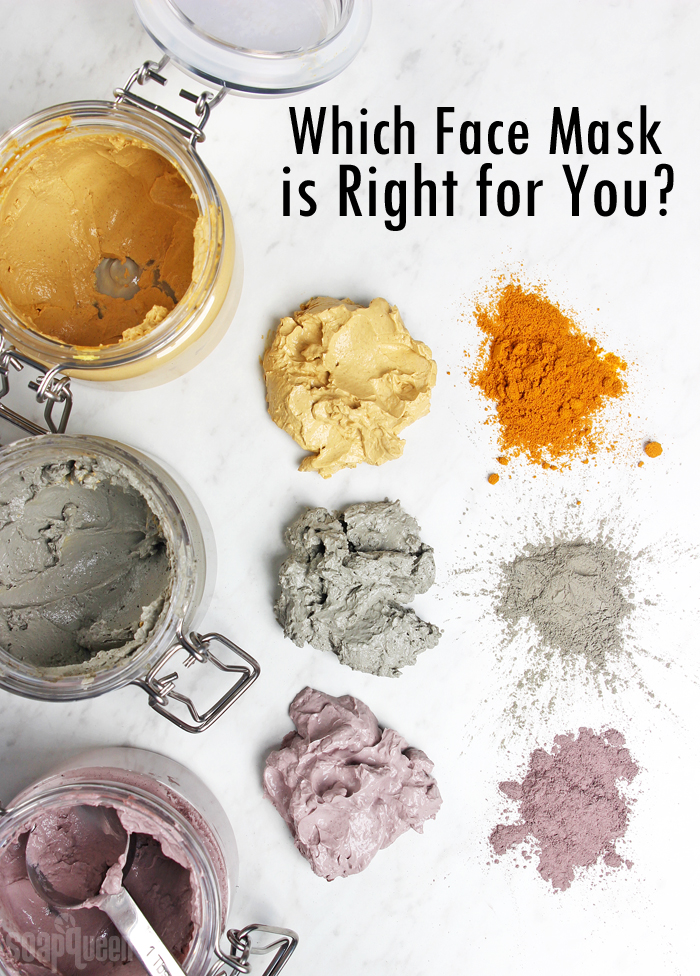
Facial skin varies widely from person to person. From dry and flaky to oily and shiny, everybody’s skin is a little bit different. Skin type determines which products and ingredients are the best for you. Last week, we shared three clay face mask recipes: Lavender Clay Mask, Sea Clay Mask and a Turmeric Clay Mask. Each mask is formulated for a different skin type and concern. Learn more about each mask below and find out which is right for your skin.
Not sure what type of skin you have? Think about how your skin would feel midday without a moisturizer. If your skin feels tight and uncomfortable, you have dry skin. If your skin is comfortable without a moisturizer, you are on the oilier side. If areas of your skin feel comfortable, while other areas feel dry, you have combination skin. Another good test is to run your finger across your T-zone (chin, nose and forehead) midday. Do you see oil on your finger? If so, you most likely have combination to oily skin. Keep in mind that skin type can change during the year depending on the season. You may be dry during the winter, and oily during the summer.
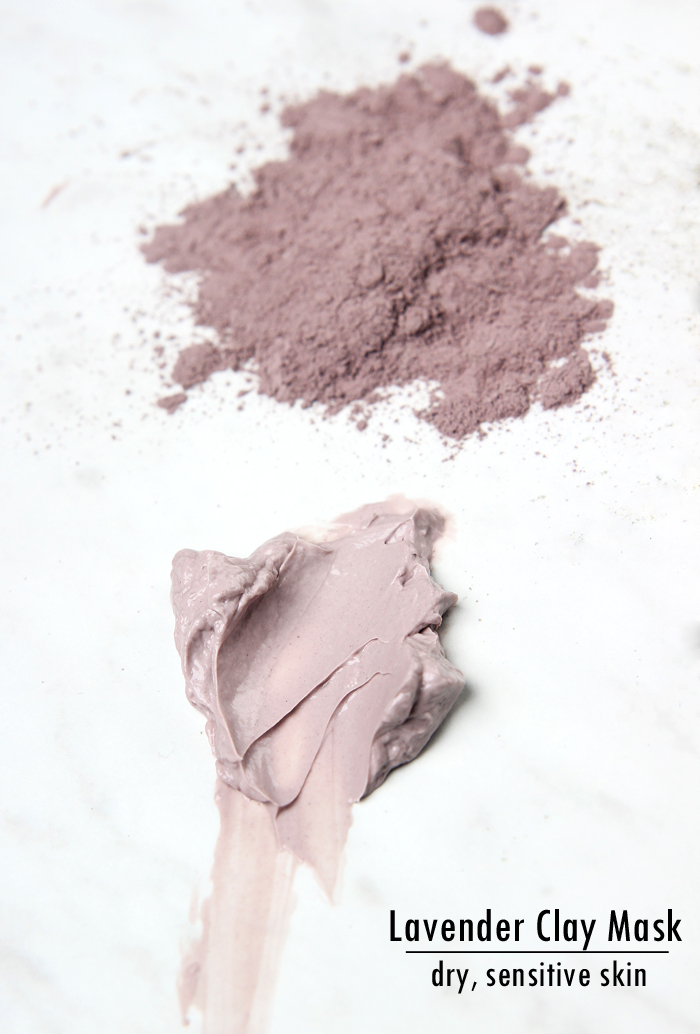
Lavender Clay Face Mask – This mask is formulated for dry skin. It contains the least amount of kaolin clay to lessen the oil absorbing properties. Purple Brazilian clay adds a beautiful color. The mask contains argan oil, which is well known for its intense moisturizing properties and large amounts of vitamin A and E. Evening primrose extract is wonderful for soothing dryness, making it a good choice for dry skin. Lavender 40/42 essential oil gives this face mask a soft, calming scent. If your skin is extremely sensitive, you may want to omit the essential oil from the recipe. Because this mask does not contain a large amount of clay, it will only dry on the skin if a very thin layer is applied.
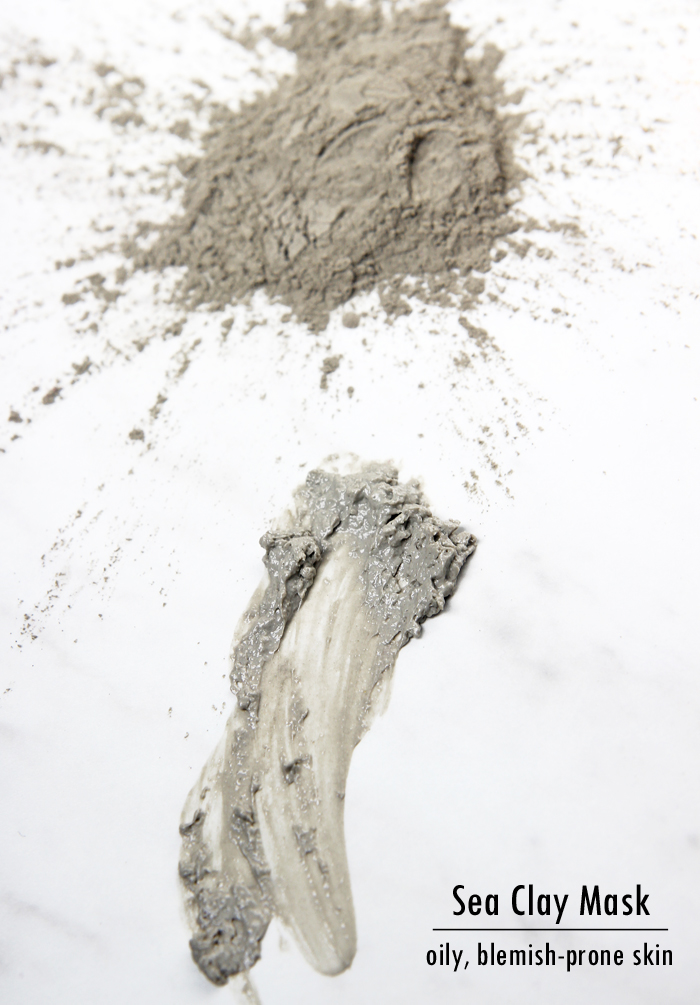
Sea Clay Face Mask – The Sea Clay Mask is formulated for oily skin and contains the largest amount of clay. Equal amounts of kaolin clay and sea clay are used. Kaolin clay is a fantastic gentle clay, while sea clay adds some serious oil absorbing properties. It has a thick texture and dries completely on the face after about 15 minutes. Tea tree essential oil adds a refreshing scent, and some studies claim it has antimicrobial properties. Hazelnut oil is ideal for oily skin as it absorbs quickly with no greasy residue. This mask also contains ginseng extract, which comes from the ginseng root and is commonly used for homeopathic treatments.
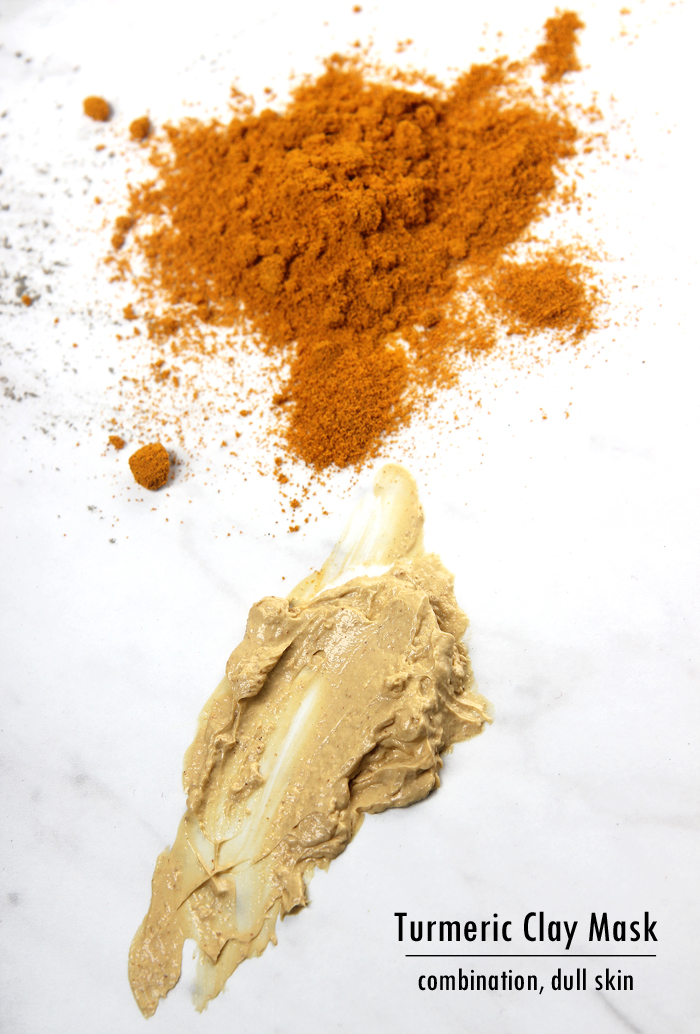
Turmeric Clay Face Mask – This mask is formulated for combination to oily skin, or if you are concerned about redness or dullness. The only clay in this mask is kaolin clay, which has mild oil absorbing properties. This mask does contain enough clay to dry on the skin, giving that classic clay mask feeling. Turmeric contains curcumin, which is an anti-oxidant and is thought to have anti-inflammatory properties. Don’t worry about this mask leaving your skin yellow; it washes off cleanly with warm water. This mask contains carrot extract and carrot seed essential oil, both of which are rich in vitamins A and E.
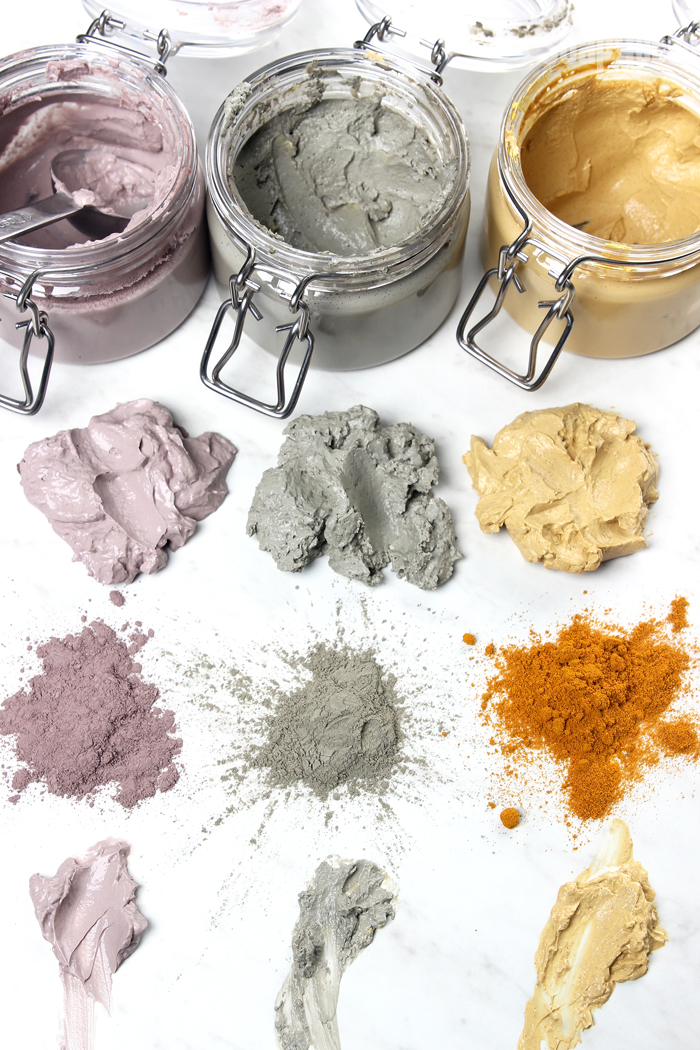
Of course the best part about making your own skin care is being able to tweak the recipes for your skin. Feel free to swap out the essential oils, clay, extracts and more for something that may work for your skin better. A small test batch is always a good idea! Each clay post above also includes tips for recipe substitutions and changes. If you’d like to learn more about which kind of clay is best for your skin, click here.





Is there a face mask recipe for super dry skin? Can clays be hydrating as well?
We don’t have one for super dry skin, as masks are meant to suck away moisture. If you want something hydrating a cream would be more of what you are looking for. https://www.soapqueen.com/bath-and-body-tutorials/lotion/oil-free-lavender-face-lotion/
What is the basic ratio (%) to make natural mask?
We’ll need a little more information to help out. What exactly are you looking for?
May I ask where you buy these lovely glass and silicone harness jars?
Those jars are plastic.
4 oz Plastic Bail Jar: https://www.brambleberry.com/4-oz-Plastic-Bail-Jar-P5593.aspx
Short 8 oz Plastic Bail Jar: https://www.brambleberry.com/Short-8-oz-Plastic-Bail-Jar-P5592.aspx
Can I use mud as clay mask
That would depend on the type of mud. If you’re asking about just regular mud from the outside we probably would not recommend it.
😍
what is an alternative of sea clay?
You can use any clay you like in this recipe. Find out which one is right for your skin here: https://www.soapqueen.com/bath-and-body-tutorials/tips-and-tricks/which-clay-is-right-for-your-skin/
Can I replace Tumanu oil with some other oil?
You can use neem or pumpkin seed oil in place of the tamanu, as they have a similar feeling on the skin. If you don’t have those on hand you can use any liquid oil you have on hand. You may want to make a small test batch to see how it feels on the skin.
Neem oil: https://www.brambleberry.com/Neem-Oil-P6806.aspx
Pumpkin seed oil: https://www.brambleberry.com/pumpkin-seed-oil-p5894.aspx
are these able to be packed into squeeze tubes?
I think that should be just fine, they do have a fairly thin lotion-like texture. You may test a small portion just to see how they do.
-Kelsey with Bramble Berry
Can I just buy the mask instead of the indregients.
We don’t sell the premade mask, but you may be able to find some great handmade masks on Etsy.com or at your local markets/stores.
-Kelsey with Bramble Berry
how long this mask will leave without getting molder coz i want to make some and sell it ?
These masks have a shelf life of about 3-6 months. They contain a preservative to help prevent mold and bacteria growth. 🙂
-Kelsey with Bramble Berry
Hi there…
Regarding your preservative Optiphen, is there some other natural preservative I could use instead of it? Please let me know, I really want to try out these masks and keep them…
We haven’t found a natural preservative that works well for us. They don’t protect against mold and bacteria very well. The Optiphen protects against mold and bacteria well and it’s paraben and formaldehyde free! You can use Phenonip in the same amount as well. Learn more about preservatives here: http://www.soapqueen.com/bath-and-body-tutorials/lotion/talk-it-out-tuesday-preservatives/
-Kelsey with Bramble Berry
I would like to know if I can substitute Phenonip or Germaben for the Optiphen in the clay mask recipes? I have plenty of the Phenonip and Germaben and would just like to use it vice having to order another preservative.
You can! Either one will work in these recipes. You can use them at the same amount as the Optiphen. 🙂
Learn more about preservatives here: http://www.soapqueen.com/bath-and-body-tutorials/lotion/talk-it-out-tuesday-preservatives/
-Kelsey with Bramble Berry
Hi! Thank you for the recepie I love it! In which price can I sale the facial clay in a 4oz jar? Thank you for the help…
What you price the mask at depends on a number of factors, including labor, materials, the market you’re in, etc. This post has some great information on how to price your products: https://www.soapqueen.com/business/much-charge-products/
-Kelsey with Bramble Berry